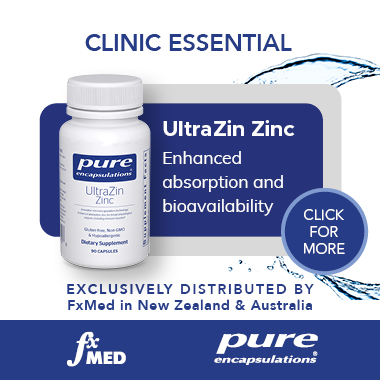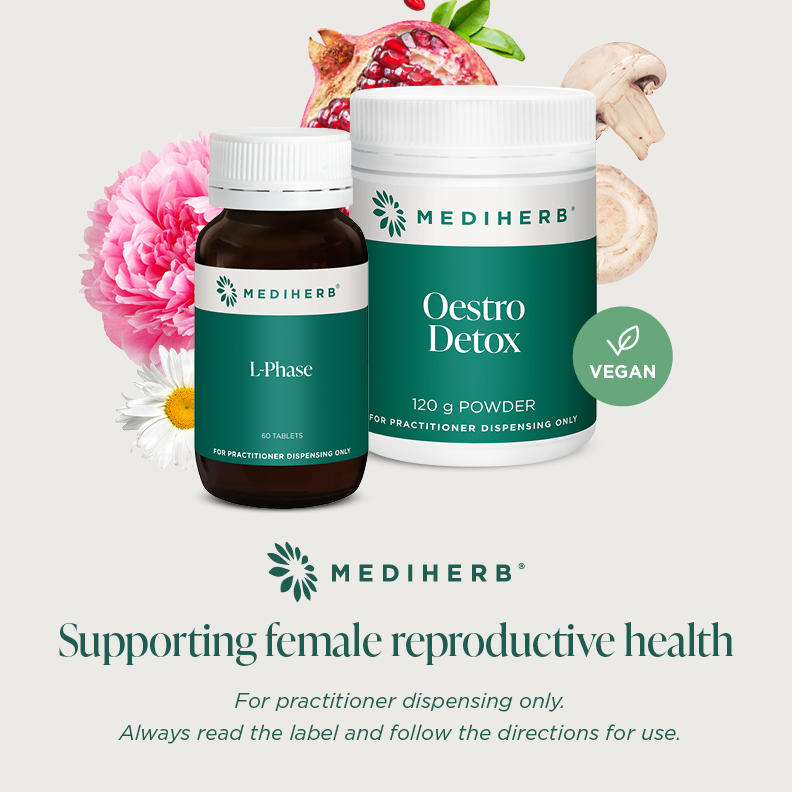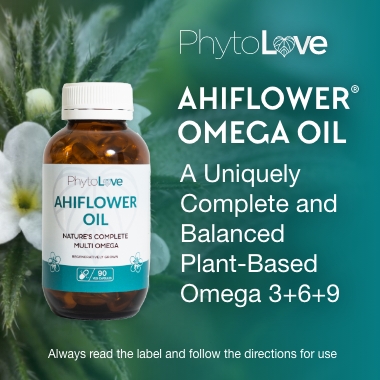Volume 34 Issue 4
Editorial
Susan Arentz
For referencing Arentz S. Editorial. The Australian Journal of Herbal and Naturopathic Medicine 2022;34(4):144-145
DOI https://doi.org/10.33235/ajhnm.34.4.144-145
How can we get them to exercise when they don’t feel like it?
Physical inactivity has a serious health impact. It is estimated that it alone accounts for 6–10% of coronary heart disease, type 2 diabetes, breast and colon cancers, and reduced life expectancy1. But when some of our patients hate exercise, being instructed about the benefits does not overcome inactivity enough to reap lifesaving rewards. We’ve all heard people say “exercise is addictive” or “running gives you a high,” but for many, it’s hard to love exercise. Some even dread it, or panic at the thought of the beach or the gym. So, how can we encourage physical activity in people who hate it, especially for those overweight and with chronic disease?
Clinical consults supported by educational material are a common approach.2 Explaining the benefits, presenting the risks, and outlining health burdens all provide good reasons to prompt physical activity. This is a concrete approach that is linear in nature, and based on psychology’s theories of structure, that behaviour will change according to thoughts, that ‘we do as we think’. The trouble is that health warnings like this can generate fear as patients perceive their condition as severe and susceptible3. Plus embedded in this question lies the cause of the problem; ‘I don’t feel like it’. Treating the cause is what people want and this is better aligned with naturopathy and herbalism4. In answering this question, treating the cause requires acknowledged emotions, along with thoughts (cognition) as they both play into behavioural change. Knowledge from psychology’s complex theory refines clinicians’ tact.
As a health discipline, psychology has evolved from early theories of linear structure and dominant talk of cause–effect relationships5. The idea that ‘we do as we think,’ depicting behaviour as a product of cognition, came from meta theories of structural systems. This gave way to thinking in ways that are relational and complex, based on dynamic systems and functionalist ideas. Cognition and behaviour, along with emotion, are now framed as iterative, interactive and inclusive. The developed functionalist and dynamic meta-theories now include structural systems re-contextualised as contributory rather than dominant. Psychology research advanced, evaluating objective and subjective whole-person outcomes that incorporate humans’ emotional experience, and clinical approaches developed. Trans-theoretical models, where practice includes components of psychological therapies as indicated in individualised healthcare, are currently practised in psychology clinics. The approach is also reported by patients of naturopaths as already applied in naturopathy clinic4.
Clinical outcomes are clinical effects derived from four sources6. There are physiological effects from therapies, such as herbal medicines and nutritional supplements. There are effects from expectancy (placebo), as well as extra-therapeutic effects, like social support, spontaneous remission, and fortuitous events. A fourth clinical effect comes from therapeutic relationships. Across all health disciplines, practitioners’ congruence, warmth and empathy are common therapeutic forces that correlate with clinical outcomes even more than specialised physiological treatments6. A therapeutic relationship enables all parties (in the relationship) direct access to determinants of behavioural change, including exploring individual physical and psychological capability, physical and social opportunity, and personal motivators (referred to as the COM-B model). Exploring individual experience can reveal intrinsic and extrinsic motivators and reasons for change7.
Intrinsic motivators come from within. They involve doing something for personal benefits, such as exercise because it feels good, or learning a new skill. Extrinsic motivators are external, like trying to win a game, or to improve body shape to get approval from others8. Intrinsic and extrinsic motivators are personally informed and theoretically drawn from psychological concepts of trans-theoretical models.
Evaluation of the moderating effects of trans-theoretical models on physical activity found specific components predict motivation9. One component, self-efficacy, was found to double the odds of physical activity. Self-efficacy is defined as a perceived ability and the confidence to exert behavioural control (physical and psychological capability). From psychology theory, self-efficacy can be fostered through four mechanisms: 1. exposure to mastery experiences; 2. providing modelling or vicarious experiences; 3. persuasion; and 4. giving physiological experience. Self-efficacy can be generated within the emotional safety of a therapeutic relationship that explores experiences and includes proactively developing plans that include physical activity, whatever its form. Patients of naturopaths cite exemplar reports of feeling seen and heard as individuals in their naturopathic consults4 which is scientific evidence of therapeutic partnership and clinical approaches facilitating self-efficacy.
Inactivity worsens at least 35 unhealthy conditions, including ten leading causes of death10. There are literally thousands of studies with high quality data, unequivocally revealing the dire health consequences of sedentary life. Presenting the risks warns about consequence and may have a role in improving public health, but in clinical practice it can provoke fear3 and threaten the safety of therapeutic relationships. Evidence from research shows that patients of naturopaths value the therapeutic relationship developed in clinic, and developed self-efficacy from personalised care4. A psychology informed approach to naturopathic and herbal clinical practice sits comfortably under the principles umbrella of ‘treating the cause’ and ‘doctor as teacher’. Doctor as teacher in this case acknowledges emotions, facilitates insight and empowers self-determined, enduring healthy behavioural change.
This issue presents two original research articles, the first from researchers in Iran evaluating the effectiveness of Vitex Agnus-Castus (VAC) tablets (10–15mg per day) in 66 women with peri-menopause symptoms. Significant improvements were found for women taking VAC including better sleep, and fewer hot flushes and emotional problems. Although more replicated research is needed, this RCT contributes to the evidence of the multi-dimensional activities of VAC in women.
The second is a literature review of Hydrastis canadensis and its detrimental or beneficial effects on the gastrointestinal (GIT) microbiota. The authors included five clinical trials showing positive effects of berberine for people with diabetes (normalised HbA1c and reduced cardiovascular risks) and with Graves’ Disease (lowered thyroid antibodies and normalised thyroid function), associated with digestive ecological changes. These changes were somewhat paradoxical with increased pathological species and species profiles that can increase the risk of bowel cancer. More investigations are needed to find out how specific changes of GIT microbiota contributes to positive clinical outcomes.
Dr Wendy McLean has again put together an edifying MedJourn and MedPlant section. Reviewed publications include ten RCTs and three systematic reviews evaluating 13 naturopathic and herbal treatments for various conditions, including mental health – blueberries for improved cognitive speed in mild cognitive decline, mindfulness against escitalopram for anxiety, PEA with risperidone for schizophrenia, CoQ10 for fatigue and Holy Basil for stress mood and sleep. Efficacy of honey, crocin or Trigonella foenum-graecum were evaluated for reduced risk factors in cardiometabolic diseases. For women’s health complaints, probiotics were evaluated for iron status in young women, ginger for reducing side effects of chemotherapy in breast cancer, and Silybum for endometriosis. And finally, an RCT evaluating the efficacy of Echinacea for the prevention of COVID-19, outlines much anticipated data.
As 2022 draws to an end, on behalf of the editorial and publishing team I’d like to wish you all the best for the holiday season. This year has brought many new realities; things have indeed changed. Many have faced adverse circumstances, repeated inclement weather, and floods, floods and floods again. Still, our committed peer review team has served this profession and peer reviewed over 35 manuscripts submitted to the journal. Many are from professions outside naturopathy and herbalism and I take the opportunity to thank them for their contribution to the journal.
Author(s)
Susan Arentz PhD, BHSc(Hons)
Editor, Australian Journal of Herbal and Naturopathic Medicine
PO Box 696, Ashfield, NSW 2131, Australia
Email editor.ajhnm@nhaa.org.au
References
- Lee I-M, Shiroma EJ, Lobelo F, et al. Effect of physical inactivity on major non-communicable diseases worldwide: an analysis of burden of disease and life expectancy. The Lancet 2012;380:219–29.
- Steel A, Leach M, Brosnan C, Ward V, Lloyd I. Naturopaths’ mobilisation of knowledge and information in clinical practice: an international cross-sectional survey. BMC Complementary Medicine and Therapies 2021;21:1–12.
- Lovibond P. Fear and avoidance: an integrated expectancy model. In: Craske MG, Hermans D, Vansteenwegen D, editors. Fear and learning: from basic processes to clinical implications. American Psychological Association; 2006. p. 117–132. doi:10.1037/11474-006. https://doi.org/10.1037/11474-006
- Foley H, Steel A. Patient perceptions of patient-centred care, empathy and empowerment in complementary medicine clinical practice: a cross-sectional study. Advances in Integrative Medicine 2017;4:22–30.
- Witherington DC, Crichton JA. Frameworks for understanding emotions and their development: functionalist and dynamic systems approaches. Emotion 2007;7:628.
- Lambert MJ, Barley DE. Research summary on the therapeutic relationship and psychotherapy outcome. Psychotherapy: Theory, research, practice, training 2001;38:357.
- Michie S, Johnston M, Francis J, Hardeman W, Eccles M. From theory to intervention: mapping theoretically derived behavioural determinants to behaviour change techniques. Applied Psychology 2008;57:660–80.
- Behzadnia B, Alizadeh E, Haerens L, Aghdasi MT. Changes in students’ goal pursuits and motivational regulations toward healthy behaviors during the pandemic: a self-determination theory perspective. Psychology of Sport and Exercise 2022;59:102131.
- Romain AJ, Bortolon C, Gourlan M, et al. Matched or nonmatched interventions based on the transtheoretical model to promote physical activity. A meta-analysis of randomized controlled trials. Journal of Sport and Health Science 2018;7:50–7.
- Booth FW, Roberts CK, Thyfault JP, Ruegsegger GN, Toedebusch RG. Role of inactivity in chronic diseases: evolutionary insight and pathophysiological mechanisms. Physiological Reviews 2017;97:1351–402.






